Plug + Play by Neil Merry
This kit by Royal College of Art graduate Neil Merry allows musicians to control sound and lighting effects at their gigs by slinging the microphone around or waggling their instruments about (+ movie).
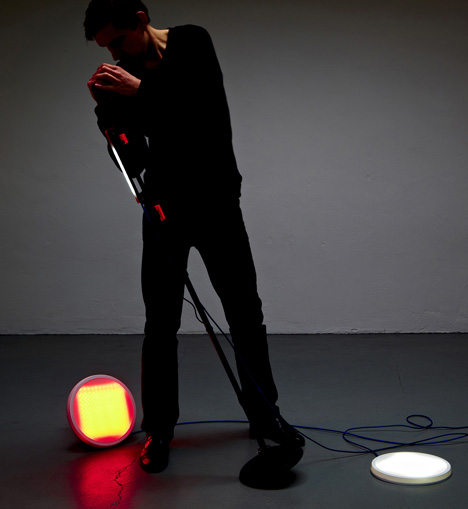
Presented at the Royal College of Art graduate show in London this week, the portable Plug + Play kit includes sensors that clip onto instruments or microphone stands, controlling sound and lighting according to the performer's movements and gestures.
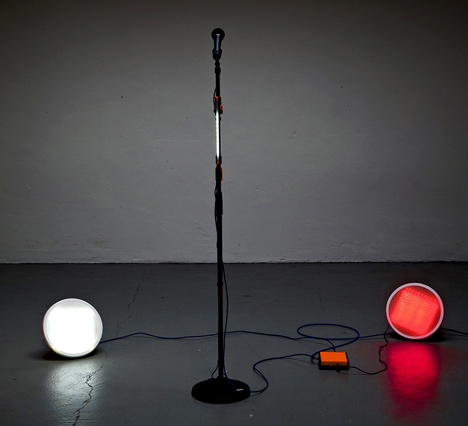
One senses the proximity of the performer to the microphone, for example, while another is activated by twisting the microphone stand.
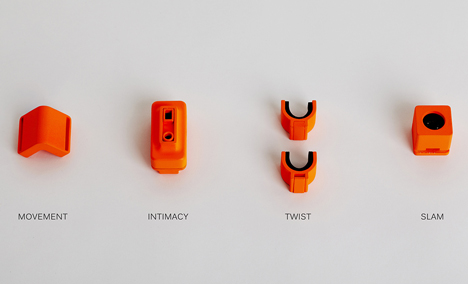
"It's about having control over things you wouldn't normally have control of as a performer," says Merry, who thinks the kit could bring more engaging performances to electronic music in particular: "With electronic music you can be stuck behind a laptop so you lose that interaction, whereas this lets you control the electronic sounds in a more physical way."
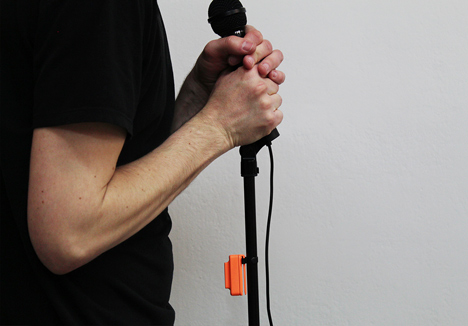
He explains that while shows at a big venue might come with a sound desk and a lighting display, "this is a kit for intimate gigs on a small stage - it's something one person can take with them."
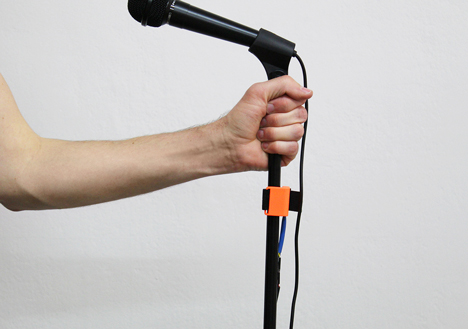
All the components clip together on the back of the lamp for easy transportation. Right now the sensors feed into a control box that relays changes to the speakers and a light, but Merry hopes to make the system wireless so it would be easier to set up.
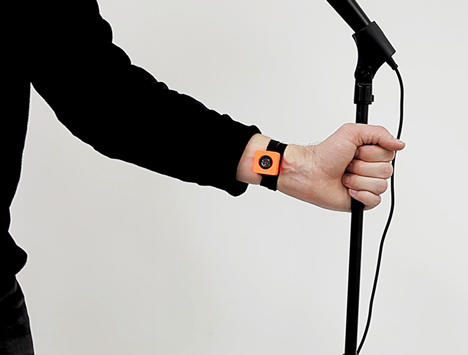
Neil Merry is graduating from Platform 17 of the Design Products course at the Royal College of Art, where the show opens to the public from 20–30 June.
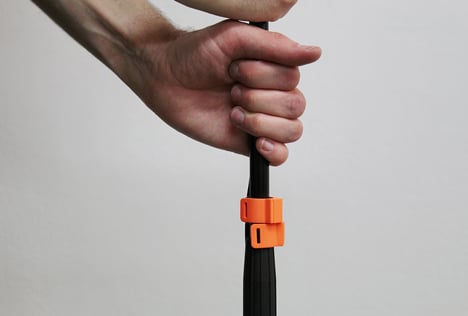
Other work on display includes a mask that lets you tune your senses like a TV and wooden shoes based on furniture structures.

Other musical projects on Dezeen include a record-playing bicycle, an amplifier that only works when people link hands or touch noses and a combined glassblowing pipe and trumpet.
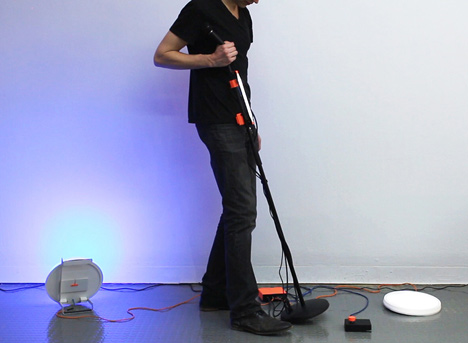
See all stories about the Royal College of Art »
See all our stories about design for music »
Here's some more information from Neil Merry:
PLUG + PLAY
Plug + Play is a portable toolkit for the performance of electronic or computer-based music. Traditionally, electronic music requires the performer to hunch behind a laptop or synthesiser pushing buttons and twiddling knobs, as a consequence this can the lack live visual performance and on-stage energy of a more traditional band. Using a collection of sensors and lights, Plug + Play provides a means for a more dynamic performance of electronic music by translating gestures and actions into sound and lighting effects.
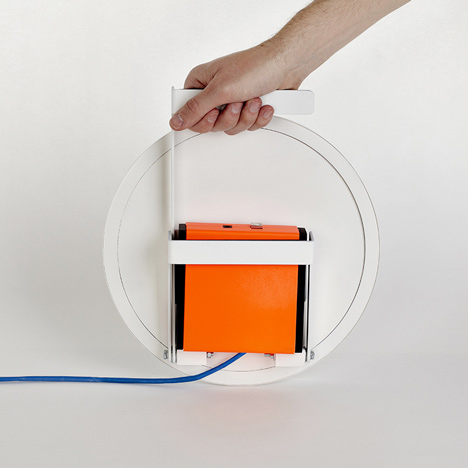
Each sensor works according to a different method of interaction (Movement, Intimacy, Twist & Slam) and can be worn on the body or attached to an existing instrument. As such, a microphone stand can become a 3D music controller, a maraca a heavy bass line or a raised hand a pulsating synth wave.
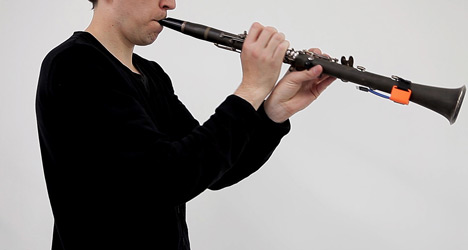
My design fits within the existing architecture of a live performance and interfaces with the huge range of sounds provided through modern music software (a sort of advanced, digital equivalent of the guitar pedal). With the increased accessibility of music creation programs on laptops and tablet devices, it has never been easier to produce your own music, however there are currently very few options when it comes to performing this music live. Plug + Play can integrate electronic sounds into a live band, orchestral performance, or simply give electronic artists new ways to create sounds and music. The whole kit can be packed up and easily carried and would be particularly suitable for performance in small music venues, as well as easily integrating into a larger stage set-up, suiting both bedroom producers and more established musicians.
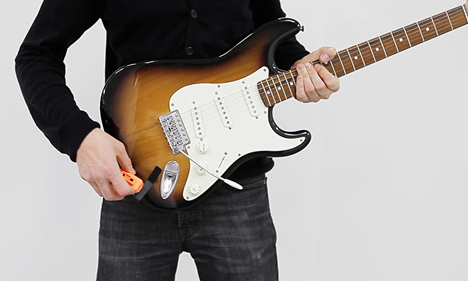
As vocals are a common element in many electronic tracks, I used the microphone stand as my main point of focus for this project. Already featuring as a tool for expression by many performers, each Plug and Play sensor enables this expression and physical interaction to become a central part of the music creation. The result is to turn the simple microphone stand into an instrument in its own right and offer a more tactile and emotive interaction with electronic and digital sounds.
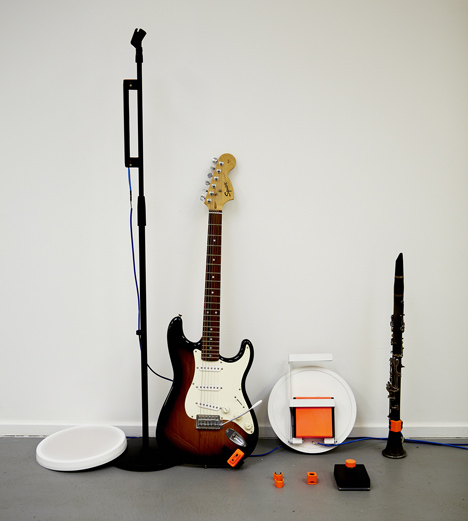
Neil Merry is a recent graduate of Design Products course at the RCA, studying on Platform 17 which focuses on the broad world of consumer electronics and is tutored by Martin Postler and Ian Ferguson. Within my work I look to find meaningful applications of technology that bridge gaps between the physical and digital and provide new spaces for interaction and expression.